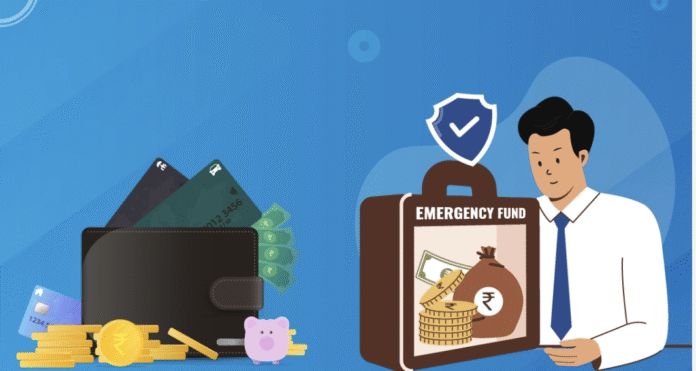In today’s unpredictable world, building an emergency fund has become more crucial than ever. Whether faced with sudden job loss, unexpected medical bills, or urgent home repairs, having a financial safety net can provide stability and peace of mind. In 2025, economic shifts such as inflation, changing job markets, and increasing living costs make preparing for emergencies an essential step for everyone globally.
If building a robust emergency fund feels overwhelming, this guide breaks down the top 8 proven strategies to help you create your financial cushion effectively and sustainably.
1. Set a Clear, Realistic Goal
The first step to building an emergency fund is knowing how much you need. Financial experts recommend saving enough to cover three to six months of essential living expenses—including rent or mortgage, utilities, groceries, healthcare, insurance, and transportation.
For some, especially single-income households or freelancers with variable earnings, aiming for closer to nine to twelve months of expenses may provide better security. A clear target motivates consistent saving and helps measure progress.
Start by calculating your monthly essentials realistically—not forgetting those smaller recurring costs—and multiply that by your target months to get your total goal.
2. Open a Dedicated, Accessible Account
Keep your emergency fund separate from everyday spending money to avoid temptation. A high-yield savings account is ideal because it offers liquidity (easy access when emergencies strike) and earns some interest, helping your fund grow over time.
In certain markets, considering accounts or platforms that allow holding funds in stable foreign currencies (like USD) can protect savings from local currency inflation or volatility, which is especially useful for international or emerging-market audiences.
3. Automate Your Savings
“Out of sight, out of mind” can work to your advantage. Arrange for automatic transfers from your checking to your dedicated emergency fund right after payday. This “pay yourself first” strategy ensures saving is habitual and consistent—critical for steady growth.
Even small amounts add up. Starting with as little as 5-10% of your income regularly can build momentum, reducing the stress of large one-time deposits.
4. Track and Cut Non-Essential Spending
Review your monthly expenses carefully. Identify discretionary items like dining out, subscriptions, impulse buys, or luxury services that can be minimized or paused temporarily. Redirect these savings straight into your emergency fund.
Simple tweaks, like cooking at home more often or canceling unused memberships, create meaningful room in your budget. It’s a trade-off where short-term discipline creates long-term peace of mind.
5. Find Additional Income Sources
Boosting your income accelerates your ability to build an emergency fund. Consider part-time work, freelancing, renting unused space via platforms like Airbnb, or selling items you no longer need.
Even modest side earnings can make a substantial difference when added to your saving efforts. Diversifying income also builds financial resilience against unexpected job disruptions.
6. Use Windfalls Wisely
Tax refunds, work bonuses, cash gifts, or inheritance payouts can give your emergency fund a significant boost if you commit a portion or all of these lump sums.
Many leave such windfalls unplanned or use them instantly. Allocating at least part of these “extra” funds to your emergency savings speeds up your progress and keeps your goals on track.
7. Adjust Your Fund Size for Your Lifestyle and Risks
Your emergency fund isn’t a one-size-fits-all number. People with variable or seasonal incomes, dependents, or plans for big life changes (like moving or starting a business) might need to save a larger buffer.
Conversely, dual-income households or government employees with stable jobs might be comfortable with a smaller reserve. Keep revisiting your target annually or when your life situation changes.
8. Stay Committed and Review Regularly
Building an emergency fund is a marathon, not a sprint. Celebrate milestones—like your first $1,000 saved or reaching one month of expenses—and keep your motivation strong.
Regularly review your fund to adjust for inflation, lifestyle changes, or new risks. Continue building even after reaching your initial goal to create a robust and flexible safety net.
Why Building an Emergency Fund Matters in 2025
Global factors—such as post-pandemic economic shifts, inflation, geopolitical tensions, and rapid technological change—mean even stable jobs and markets face uncertainties. An emergency fund:
Reduces reliance on high-interest debt, like credit cards or payday loans, during crises
Provides a financial cushion that supports mental well-being as well as physical needs
Enables quick recovery from unexpected expenses without derailing long-term financial plans
By implementing these 8 strategies, anyone, anywhere can build a financial fortress against life’s uncertainties.
Final Thoughts
Starting an emergency fund may seem daunting but using these clear, actionable strategies makes the process manageable and rewarding. Begin today: define your target, commit to consistent savings, and protect your financial future.
As you build your emergency fund in 2025, remember that financial preparedness transcends borders and circumstances. It is a fundamental pillar for stability, resilience, and long-term success, no matter where you live.
So, take that first step now and watch your confidence—and your savings—grow.


